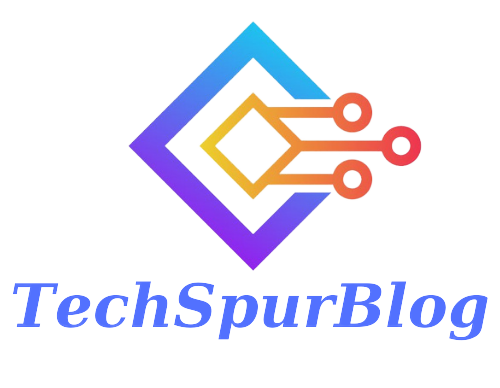There are many tools out there that can help you develop the most compelling mobile apps. In this article, I will cover some of the most useful and popular ones. Xamarin, React Native, Buildfire.js, Ionic, and React Native are all great choices for building mobile applications. But which ones are best for you? If you’re looking for the best tools for cross platform mobile app development in 2022, you’ve come to the right place.
Xamarin
Xamarin is a powerful cross-platform development framework. It connects general-purpose code with native APIs. It’s especially useful when developing apps for iOS or Android. This tool is flexible during development, so you can change its behavior to suit a particular device. In addition, Xamarin also offers a growing list of tools and utilities. Xamarin is among the top 10 tools for mobile app developers in 2022, and its popularity is growing rapidly.
Its license policy changed after Microsoft acquired Xamarin. Now, the Xamarin SDK is available under the MIT license. This paved the way for continued growth of the platform. Xamarin’s developers are available on various forums and websites, and are happy to share their experience and expertise. Plus, you don’t need to hire a full-time marketing team. Support is world-class.
Another tool is GeneXus. This visual programming tool enables developers to build robust, scalable, and secure business applications. GeneXus can also help make complex applications simpler to develop. With these tools, you’ll have more time to focus on what’s important to your business. You’ll be happier with the end result – and your customers will be too!
React Native
Facebook is one of the largest users of React Native, and its development team is constantly improving the framework to make it even more useful for developers. Facebook is a great supporter of this framework, and they address community suggestions and user problems quickly. They are also constantly modernizing their architecture and code to make them faster and more lightweight. Despite its popularity, React Native is still relatively new and is still being used by many developers.
One of the main benefits of using React Native is that it can run on multiple platforms, including Android and iOS. Since 90% of web application code can be adapted to create mobile apps, it is easy for developers to switch to it without rewriting the entire codebase. React Native allows developers to contribute their knowledge and experience to the community, making it an excellent choice for both new and experienced developers.
Buildfire.js for Mobile App Developers
While the current market is flooded with a plethora of tools, many are just starting out. If you want to get started, we recommend the app builder Buildfire.js. Its feature set is vast and allows you to create any type of app with a minimum of code. It also includes a plethora of industry-specific features. For example, you can turn a Shopify website into a native app. Buildfire is affordable, starting at $159 per month. A 14-day free trial is available before purchasing, after which it costs $199 per user per year.
Buildfire is an app builder that requires no coding experience, which makes it a popular choice for non-programmers. It lets business users create custom apps without much trouble. They can either drag and drop app parts from scratch, or customize pre-built templates. Buildfire is a robust tool that has more than ten thousand apps, making it an ideal choice for both beginners and experienced mobile app developers.
Ionic
This powerful software allows mobile app developers to create apps that are compatible with all the popular platforms, including iOS and Android. With Ionic, you don’t have to worry about coding or learning a complex language. It’s free to use and even offers enterprise-level packages. With its powerful set of features, it is the go-to tool for Ionic mobile app development.
Ionic is a cross-platform mobile development framework, which allows developers to create interactive hybrid and cross-platform applications. It also makes use of Apache Cordova, a powerful framework for mobile apps. The framework is free, and it allows developers to create native and cross-platform apps. It’s compatible with Android 4.1 and iOS 7, as well as all upgraded versions. Developers can build native apps with Ionic by combining it with Flutter, a cross-platform framework based on HTML and CSS.
If you’re a mobile app developer, Ionic is a free tool for creating hybrid mobile apps. Its powerful UI toolkit helps you develop apps across multiple platforms. You can learn how to use Ionic by following tutorials on YouTube or Udemy. Flutter is an extension of Ionic and uses Dart, a programming language. If you’re interested in learning how to use this tool, make sure you look for courses from the best instructor.

With mobile apps taking the world by storm, it is essential to move your business to the digital space. The Flutter app development framework enables you to select from an array of tools that will make your coding process easier. This framework features an impressive set of code debuggers, visual support, and code completion. Here are 10 reasons why Flutter is one of the top 10 tools for mobile app developers in 2022.
A separate-interfaces policy will help you save time and money by streamlining your project management. By requiring only one design code and simplified testing procedures, you can cut costs by twenty to twenty-five percent. With Flutter, you can achieve this at a cost-effective rate. Stream also has a tutorial to help you integrate chat into your Flutter app. Stream x Bloc is an example of an application using this technology.
Adobe XD eases developer workflow by allowing you to place design components directly into the codebase. Eventually, Flutter will be launched on the platform. In the meantime, developers can use it to create engaging apps. It is also a great tool for cross-platform development. In addition, Flutter is free. When used correctly, Flutter will become the leading platform for building native mobile apps.
Swiftic
If you are a mobile app developer and are looking for a tool that can help you develop iOS apps, Swiftic is a great choice. Its user-friendly interface makes it easy for anyone to create an app from scratch, and it has numerous useful features that make it a good choice for both beginners and experienced developers. Swiftic is not only compatible with iOS, but also Android and Windows mobile. It also offers a number of loyalty-enhancing elements and unlimited app downloads.
Aside from Swiftic, other top-rated tools include Xamarin and Braintree. Both these tools offer advanced features and support 23 languages. Using the Xamarin development platform, developers can use the same code for iOS, Windows, and Android apps. Another tool worth considering is Appcelerator, which is a cloud-based platform for creating mobile apps. The Appcelerator platform supports Windows, iOS, and HTML5 applications.
Corona Software Development Kit
Despite the advantages of the SDK, mobile app developers have to choose between its native counterparts, namely iOS and Android. iOS and Android have a similar user experience, but Apple is king of the charts. Android users enjoy a wider variety of apps, while the iPhone and iPad have fewer than 100 million downloads. However, a mobile app’s quality largely depends on its performance. Corona is one of the fastest SDKs on the market. As long as the SDK is up to par, it will provide a smooth experience on both platforms.
The SDK is cross-platform and utilizes Lua scripting to enable developers to create cross-platform applications. Applications written in Corona can be tested on simulators, compiled into native code for mobile platforms, and used across various platforms. In addition, Corona has significantly fewer lines of code compared to Java and is ideal for game developers. Moreover, the SDK simplifies the use of REST services and OpenGL.
Apache Cordova for Mobile App Developers
It’s no secret that Apache Cordova is one of the best open-source development frameworks for mobile applications. Its hybrid-web app development framework works on standard web technologies and enables developers to build mobile applications on various platforms. Cordova apps are composed of multiple HTML pages, all of which are wrapped up in a native shell. The result is an application that looks and feels like a website within a mobile app. The framework enables developers to create native-like interfaces, which make the user experience incredibly natural. In addition to its robustness, Apache Cordova comes with many free plugins and extensions.
Cordova does have some downsides, however. It does not include UI widgets or an MV* framework. Instead, it only provides a runtime. In addition, Cordova does not come with UI widgets or MV* frameworks, which means you need to create them separately. The downside of this is that your application will look more like a web browser, but it will be compatible with most platforms.
Also Read : Why is Angular Popular in Enterprise-Scale Web Applications?
Onsen UI
Onsen UI has been praised as one of the best tools for creating complex mobile applications. It is one the most popular and widely used technologies for mobile app development. Onsen UI creates stunning HTML apps using JavaScript, HTML, CSS.
It also supports libraries such as Angular JS1, Angular 2+ and Vue. This platform can help with the creation of apps depending on which platform it is.
Its collection includes tabs and stack navigation, forms, lists, lists, and others. OnsenUI 2 is now JavaScript framework-agnostic. This means that developers can create mobile apps using any JavaScript framework.
OnsenUI is an open-source framework which makes it simple to create native-feeling Progressive Web Apps and hybrid apps. The essential archive is written entirely in JavaScript. It is context-sensible, so you can use it with any framework or its tools. Optionally, the mechanisms can be auto-styled according to the platform. This makes it possible for both iOS and Android to use the same source code.
Sencha Ext JS for Mobile App Developers
Sencha Ext JS, a cross-platform mobile application development structure, is called Sencha Ext JS. It was previously known as Sencha. However, it was merged with Ext JS to become Sencha Ext JS. Jack Slocum developed it as an add-on library to YUI. This JavaScript framework can be used to create data-intensive apps for mobiles and the web.
ExtJS includes more than 115 pre-integrated, high-performing UI elements. The components and elements include HTML5 calendar, pivot grid and grids, trees and D3 adapter. They also have toolbars, windows and panels. Sencha also offers hundreds of extensions for users. Sencha offers a variety of themes that can be used to style the elements.
Modifying a theme requires that the CSS and Script of the theme be modified. Sencha CMD may require a re-build application. Ext JS is available in two types: the classic and modern toolkit. They differ in the themes they support, as well as some API differences.
Frequently Asked Question
What is buildfire.js?
Buildfire.js is a powerful and flexible web development framework which allows you to build websites and applications using HTML, CSS, and JavaScript.
What is the difference between buildfire.js and other frameworks?
Buildfire.js is a JavaScript framework for building web applications. It contains features that are not available in other frameworks like powerful routing, data binding, and server-side rendering.
Buildfire.js is a JavaScript framework for building web applications. It contains features that are not available in other frameworks like powerful routing, data binding, and server-side rendering.
What are some of the benefits of using buildfire.js?
Buildfire.js is a JavaScript library that helps developers create and manage websites.
Benefits of using buildfire.js:
- Creates website quickly with the help of drag and drop interface
- Allows you to generate content without writing any code
- Comes with powerful tools for web development such as templates, widgets, and plugins
What are some of the disadvantages of using buildfire.js?
Buildfire.js has many advantages, but it also has some disadvantages that you should know about before using it in your projects.
There are no built-in security features like CSRF protection, so you will need to consider what precautions you want to take.
buildfire.js is a large library that includes lots of different components. It might make your project difficult to manage if each component has its own set of dependencies which could make it difficult for the users to use your project if they don’t know how every piece fits together.
How does buildfire.js compare to other frameworks that are used for web development?
Buildfire.js is a JavaScript framework that is used for web development. It has a lot of features that might not be available in other frameworks like buildfire.js, such as a built-in HTML5 editor and an integrated build system that automatically compiles the application into HTML5 and JavaScript files.
Buildfire.js is an open-source, free JavaScript framework for building fast, powerful web applications with ease. It has many features including:
- Built-in HTML5 editor
- Integrated build system
- Built with NodeJS
- Supports ES6+ syntax
What is the difference between a CMS and a web application?
Content management systems (CMS) are websites that allow users to manage their content and create new pages on their website. Web applications are websites that have a specific functionality, such as an online store or a blog.
How can I install buildfire.js?
If you are interested in building a website with buildfire.js, you may want to know how to install it.
Install buildfire.js
Follow the instructions below:
- 1) Download the latest version of buildfire from https://buildfire.com/download/
- 2) Unzip the downloaded file and open the index.html file in your browser
- 3) Install buildfire using this command:
- $ git clone git@github.com:buildfire/buildfire-web-framework-builder.git /path/to/website
- 4) Now that it’s installed, create a new project with this command: $ cd /path/to/website && ./buildproject -p myprojectname
Can you integrate buildfire.js with other platforms or tools like WordPress or Drupal?
Buildfire.js can integrate with other platforms or tools like WordPress or Drupal in many ways. For example, it can be used as a plugin for the CMS platform to allow users to create content on the backend without any front-end coding knowledge.
It offers a wide range of features such as easy page creation, responsive design, content editing with syntax highlighting, integrated plugins for WooCommerce, MailChimp and more.

We are the founders of Techspurblog and we have been in this industry for over Four years. We pride ourselves on being the global leader in developing Technology Blog, which can create original content.
We are a team of enthusiastic people who want to share our experience, knowledge and enterprise with the world. We love what we do and we hope you will too!





